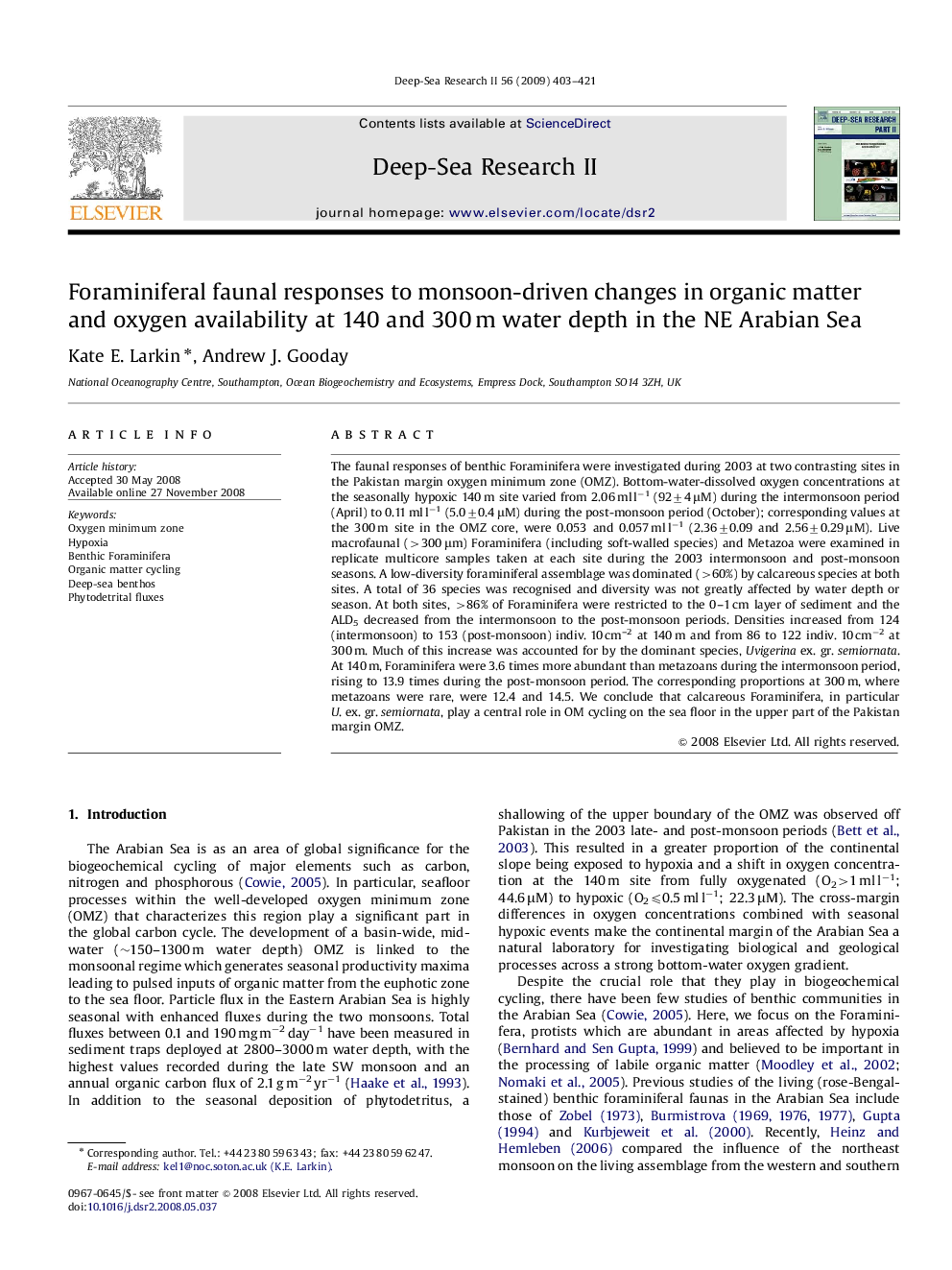| Article ID | Journal | Published Year | Pages | File Type |
|---|---|---|---|---|
| 4537932 | Deep Sea Research Part II: Topical Studies in Oceanography | 2009 | 19 Pages |
The faunal responses of benthic Foraminifera were investigated during 2003 at two contrasting sites in the Pakistan margin oxygen minimum zone (OMZ). Bottom-water-dissolved oxygen concentrations at the seasonally hypoxic 140 m site varied from 2.06 ml l−1 (92±4 μM) during the intermonsoon period (April) to 0.11 ml l−1 (5.0±0.4 μM) during the post-monsoon period (October); corresponding values at the 300 m site in the OMZ core, were 0.053 and 0.057 ml l−1 (2.36±0.09 and 2.56±0.29 μM). Live macrofaunal (>300 μm) Foraminifera (including soft-walled species) and Metazoa were examined in replicate multicore samples taken at each site during the 2003 intermonsoon and post-monsoon seasons. A low-diversity foraminiferal assemblage was dominated (>60%) by calcareous species at both sites. A total of 36 species was recognised and diversity was not greatly affected by water depth or season. At both sites, >86% of Foraminifera were restricted to the 0–1 cm layer of sediment and the ALD5 decreased from the intermonsoon to the post-monsoon periods. Densities increased from 124 (intermonsoon) to 153 (post-monsoon) indiv. 10 cm–2 at 140 m and from 86 to 122 indiv. 10 cm−2 at 300 m. Much of this increase was accounted for by the dominant species, Uvigerina ex. gr. semiornata. At 140 m, Foraminifera were 3.6 times more abundant than metazoans during the intermonsoon period, rising to 13.9 times during the post-monsoon period. The corresponding proportions at 300 m, where metazoans were rare, were 12.4 and 14.5. We conclude that calcareous Foraminifera, in particular U. ex. gr. semiornata, play a central role in OM cycling on the sea floor in the upper part of the Pakistan margin OMZ.
